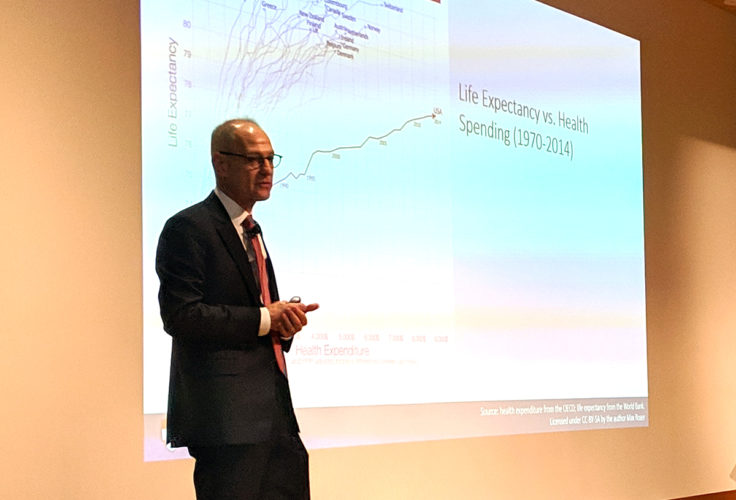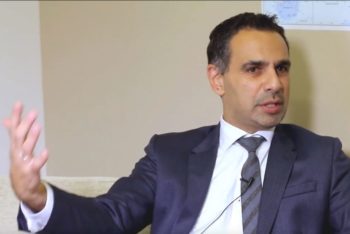In the United States, no manufacturing source exists for more than 80% of the active ingredients in medicines the US Food and Drug Administration deems essential for public health, according to a new study from the Center for Analytics and Business Insights (CABI) at Olin Business School.
“This creates an incredible vulnerability to our public health care system, our health care security,” said Anthony Sardella, an adjunct professor at Olin and senior research advisor at CABI. He conducted the study using proprietary data from across the industry.

Essential medicines include antibiotics, antivirals, blood pressure pills, steroids and many others.
“We have a national security issue related to being able to maintain our public health,” Sardella said, because the US is so reliant on foreign production of active pharmaceutical ingredients (APIs).
“The US Active Pharmaceutical Infrastructure: The Current State and Considerations to Increase US Healthcare Security” focuses on generic medications, which represent more than 80% of US prescriptions.
‘A fragile system’
APIs are the necessary components of medicines that provide patients with the drug therapy they need. The compounds are made into dosages of tablets, solutions and creams.
A June 2021 White House report on supply chain resiliency referenced an epidemic of national drug shortages occurring even before COVID and the pandemic, but “COVID really drew attention to the fragility of our pharmaceutical supply chain,” Sardella said.
The crisis highlighted US reliance on long, complex supply chains and drug shortages in the US. “We really have a fragile system.”
The first of its kind, the study relied on industrywide data from Clarivate, a data and benchmarking company in the healthcare industry that has developed a dataset—Cortellis Generics Intelligence—that provides insights across the sector.
“The data is staggering, as is the implication to our health security,” Sardella said.

A ‘race to the bottom’
His analysis shows the following:
- The majority of large-scale manufacturing sites of APIs are in India and China, while less than 5% of such sites are in the US. (In COVID times, both China and India have threatened to cut off or restrict shipments to the US.)
- Of 52 COVID-related medicines, 75% had no US source of API.
- Of the top 100 generic medicines consumed in the US, 83% had no US source of API.
- Of the 47 most-prescribed antivirals, 97% had no US source of API.
- Of the 111 most-prescribed antibiotics, 92% have no US source of API.
One cause for our weakness in API manufacturing is the “race to the bottom” on pricing against global players, Sardella said. Foreign manufacturers have structural advantages including greater government subsidies, lower costs and fewer regulatory burdens.
He said solutions to protect US healthcare security must address the risk by creating a critical mass of domestic manufacturing infrastructure to protect domestic interests; a level playing field for global competition; and sustainable domestic markets for American manufacturers.
“Tony’s outstanding research shows the impact of being both values-based and data-driven,” said Michael Wall, professor of practice in marketing and entrepreneurship and CABI’s co-director. “This principle is core to Olin and to CABI.”
The new study follows a previous one aimed at understanding the business, societal and governmental environment of the pharmaceutical supply chain. Sardella and Paolo De Bona, a consultant and formerly a staff scientist at WashU’s School of Medicine, conducted an extensive review of academic research, media reports and public policy statements to discern the causes of chronic pharmaceutical shortages in the United States and develop policy solutions to address them.
The work has gained the attention of policymakers in Washington, DC, and compelled the pair to join with the Brookings Institution in hosting a public forum on the subject.
About the Center for Analytics and Business Insights: CABI serves as a conduit between business, academia and the broader community, helping leaders better leverage analytics and technology to make a positive and principled difference in organizations, communities and society at large.












